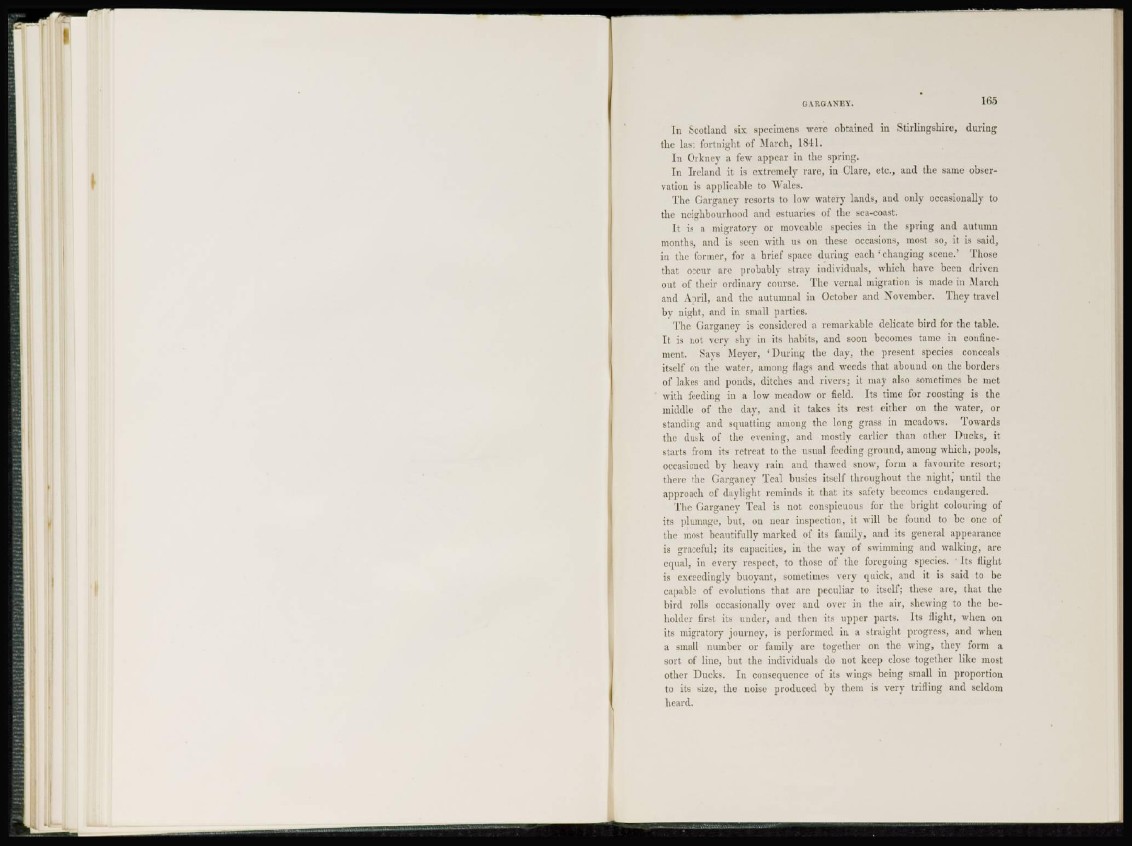
In Scotland six specimens were obtained in Stirlingshire, during
the hist fortnight of March, 1841.
I n Orkney a few appear in the spring.
I n Ireland it is extremely rare, in Clare, etc., and the same observation
is applicable to Wales.
The Garganey resorts to low watery lands, and only occasionally to
the neighbourhood and estuaries of the sea-coast.
I t is a migratory or moveable species in the spring and autumn
months, and is seen with us on these occasions, most so, it is said,
in the former, for a brief space during each'changing scene.' Those
that occur are probably stray individuals, which have been driven
out of their ordinary course. The vernal migration is made in March
and April, and the autumnal in October and November. They travel
bv night, and in small parties.
The Garganey is considered a remarkable delicate bird for the table.
I t is not very shy in its habits, and soon becomes tame in confinement.
Says Meyer, ' D u r i n g the day, the present species conceals
itself on the water, among flags and weeds that abound on the borders
of lakes and ponds, ditches and rivers; it may also sometimes be met
with feeding in a low meadow or field. Its time for roosting is the
middle of the day, and it takes its rest either on the water, or
standing and squatting among the long grass in meadows. Towards
the dusk of the evening, and mostly earlier than other Ducks, it
starts from its retreat to the usual feeding ground, among which, pools,
occasioned by heavy rain and thawed snow, form a favourite resort;
there the Garganey Teal busies itself throughout the night,' until the
approach of daylight reminds it that its safety becomes endangered.
The Garganey Teal is not conspicuous for the bright colouring of
its plumage, but, on near inspection, it will be found to be one of
the most beautifully marked of its family, and its general appearance
is graceful; its capacities, in the way of swimming and walking, are
equal, in every respect, to those of the foregoing species. Its flight
is exceedingly buoyant, sometimes very quick, and it is said to be
capable of evolutions that are peculiar to itself; these are, that the
bird rolls occasionally over and over in the air, shewing to the beholder
first its under, and then its upper parts. Its flight, when on
its migratory journey, is performed in a straight progress, and when
a small number or family are together on the wing, they form a
sort of line, but the individuals do not keep close together like most
other Ducks. In consequence of its wings being small in proportion
to its size, the noise produced by them is very trifling and seldom
heard.